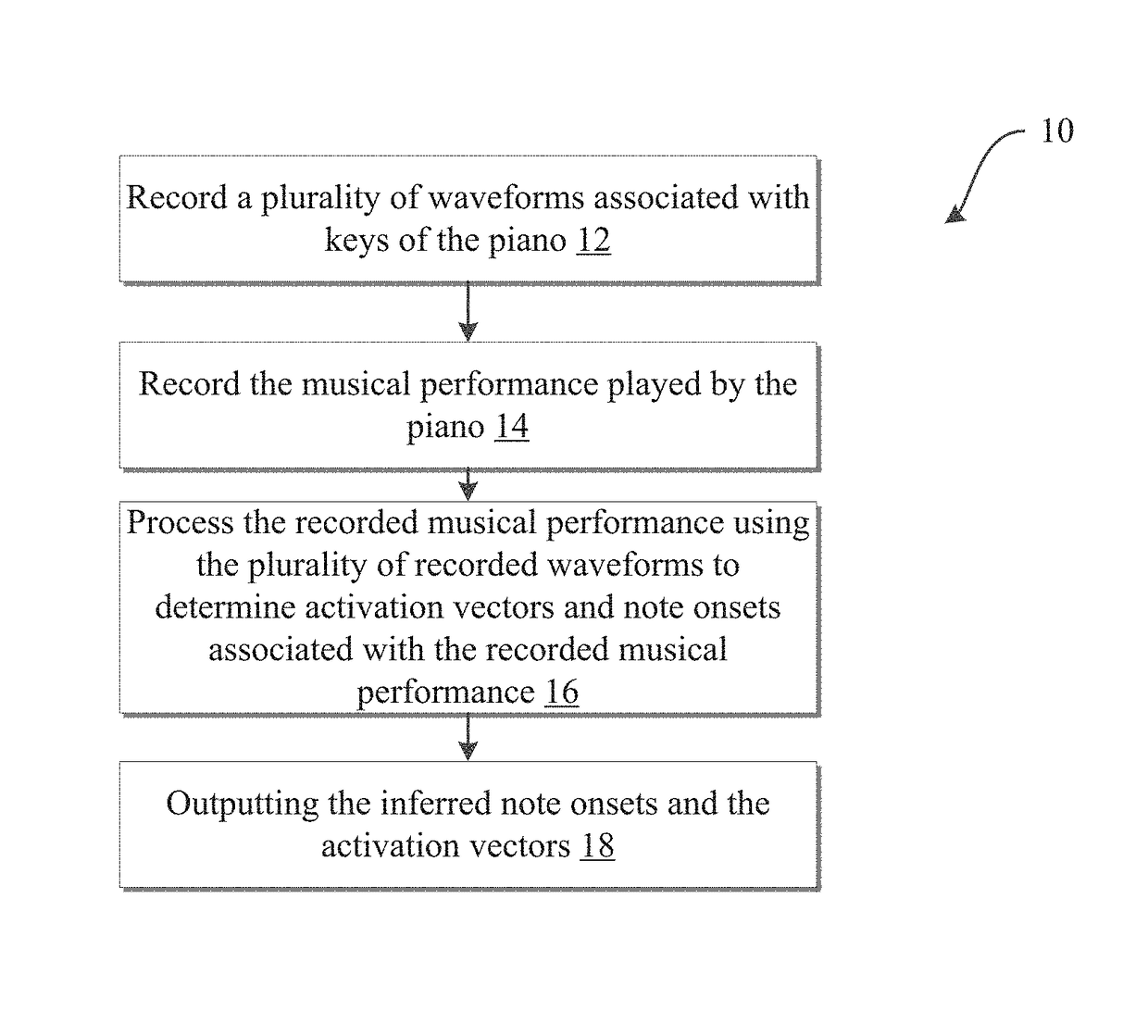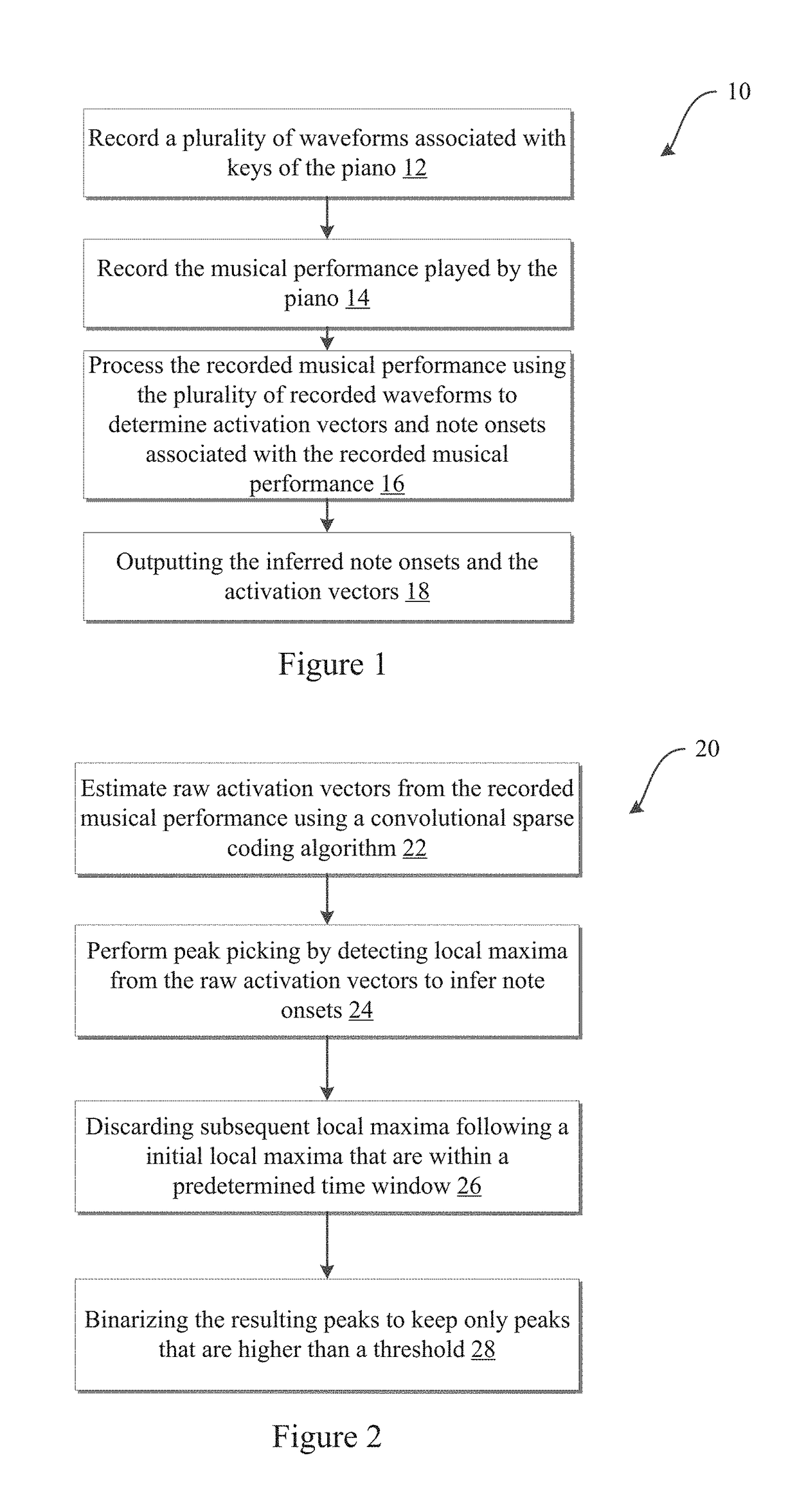Context-dependent piano music transcription with convolutional sparse coding
a piano music and convolutional sparse coding technology, applied in the field of context-dependent piano music transcription with convolutional sparse coding, can solve the problems of inability to match human performance in accuracy or robustness, methods that do not model the harmonic relation of frequencies that have this change, and the temporal evolution of the harmonic relationship
- Summary
- Abstract
- Description
- Claims
- Application Information
AI Technical Summary
Benefits of technology
Problems solved by technology
Method used
Image
Examples
Embodiment Construction
[0055]The subject matter of embodiments of the present invention is described here with specificity, but the claimed subject matter may be embodied in other ways, may include different elements or steps, and may be used in conjunction with other existing or future technologies. While the below embodiments are described in the context of automated transcription of a piano performance, those of skill in the art will recognize that the systems and methods described herein can also transcribe performance by another instrument or instruments.
[0056]FIG. 1 illustrates an exemplary method 10 for transcribing a piano performance. At step 12, a plurality of waveforms associated with keys of the piano may be sampled or recorded (e.g., for dictionary training). At step 14, a musical performance played by the piano may be recorded. At step 16, the recorded musical performance may be processed using the plurality of recorded waveforms to determine activation vectors and note onsets associated wit...
PUM
 Login to View More
Login to View More Abstract
Description
Claims
Application Information
 Login to View More
Login to View More - R&D
- Intellectual Property
- Life Sciences
- Materials
- Tech Scout
- Unparalleled Data Quality
- Higher Quality Content
- 60% Fewer Hallucinations
Browse by: Latest US Patents, China's latest patents, Technical Efficacy Thesaurus, Application Domain, Technology Topic, Popular Technical Reports.
© 2025 PatSnap. All rights reserved.Legal|Privacy policy|Modern Slavery Act Transparency Statement|Sitemap|About US| Contact US: help@patsnap.com



